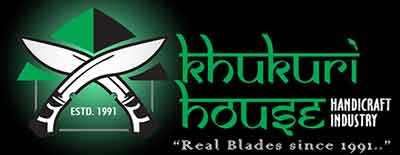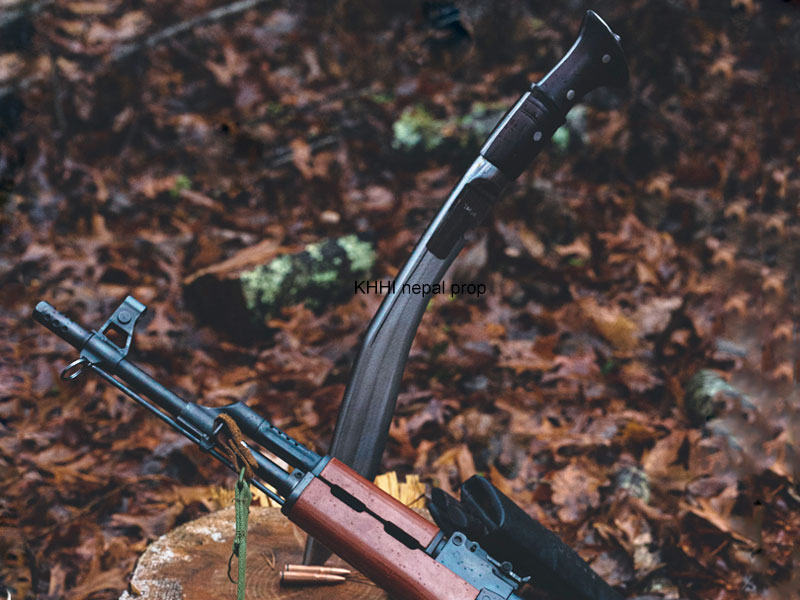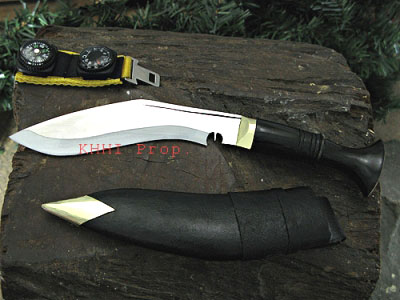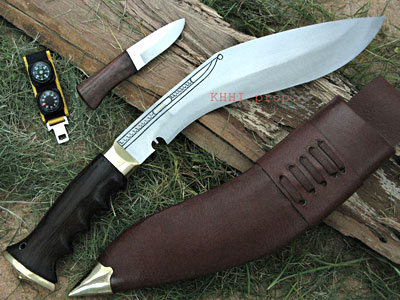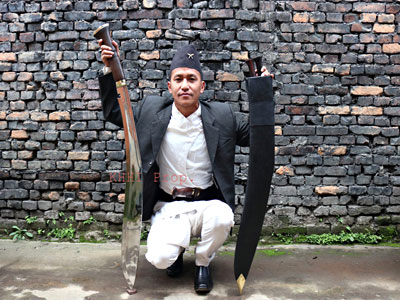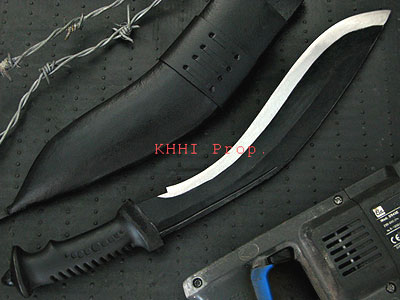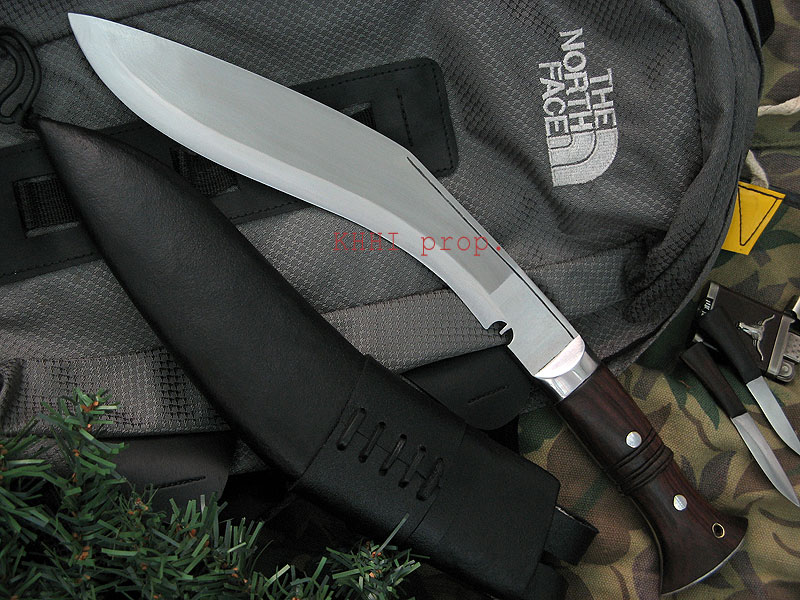
Jungle Panawal (Better)
This Khukuri is the jungle panawal version of the Gurkhas but fitted by better and stronger Panawal (full flat tang) handle..
Delivery: Estimated between May 26, 2024 and Jun 05, 2024
Item Location: Nepal
Default Specification
- Blade Size (in): 10
- Handle Size (in): 5
- Handle Material: Rosewood
- Actual Weight (gm): 615
- Overall weight (gm): 825
- Shipping weight (gm): 1125
- Blade finishing: Unpolished
- Blade sharpness: Standard (very sharp)
- Blade material: 5160
- Place of Origin: Dharan, Eastern Nepal
- Accompanying knives/B-up: Karda Chakmak
- Blade thickness (mm): 9
- Handle finishing: Polished
- Sheath: Water buffalo leather
- Released date of KHHI Nepal: 1993-02-24
- Tang type: Full Flat
- Fixture: Iron
- Edge grinding: Semi convex
- Edge Hardness: 55-57 hrc
- Blade (panel) Grinding: Full Flat
- Function: Indoor, Hunting, Jungle warfare, Regular Work, Heavy Duty, Trekking
Jungle Panawal kukri; stronger and better version of the ordinary Jungle kukris
“Jungle Panawal” is actually the same “Jungle” version reproduced by KHHI but with a superior full-flat-tang handle. The same blade is fitted with a “Panawal” handle to enhance the working ability of the knife hence the name follows as the “Jungle Panawal”.
It is an unpolished full-size kukri used for jungle warfare and domestic need too. It is designed for rough use so no finishing (shinning) is done on the blade. The total unpolished format of Jungle Panawal enhances the cutting ability and durability of the blade. Here the loss of hardness is prevent by avoiding the long machinery process undertaken to polish a blade which generates extreme heat. It is also an optional knife for the British Gurkhas as a training or combat kukri. It is very famous among users because of its typical kukri look and better feature (handle), as an all-purpose utility knife.
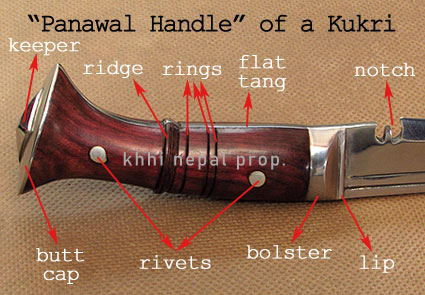 As mentioned above unlike the regular "Jungle", the special feature or the strength of this kukri is its extra strong handle. It is especially designed for heavy stressful work. It has a unique distinct handle where the metal (tang) of the blade in the handle area is flat, not narrow and pointed as in other knives. The blade is therefore visible all around the handle. The handle is further joined strongly to the blade by two rivets that can also be seen at the sides. This full flat tang version makes handle very tough and also gives a good counter balance to the blade making it very easy and effective to use.
As mentioned above unlike the regular "Jungle", the special feature or the strength of this kukri is its extra strong handle. It is especially designed for heavy stressful work. It has a unique distinct handle where the metal (tang) of the blade in the handle area is flat, not narrow and pointed as in other knives. The blade is therefore visible all around the handle. The handle is further joined strongly to the blade by two rivets that can also be seen at the sides. This full flat tang version makes handle very tough and also gives a good counter balance to the blade making it very easy and effective to use.
A leather loop (Lanyard hole) is also made in the tip of the scabbard to hold the knife firmly in the user’s thigh to prevent from wobbling while in motion by using a string. This comes as an additional feature to better that adds value to the knife. The same feature (lanyard hole) is also introduced in the handle to tie in wrist. This make sures the blade always stays in hand.
Jungle Panawal has a twin loop belt frog (military) in its sheath to carry the khukuri.
Size of blade: 10 inch approx.
Materials: Water buffalo leather scabbard, full flat tang twin rivets wooden handle, 2 x small knives
 Brief Historic Background of Panawal khukuris
Brief Historic Background of Panawal khukuris
Historically speaking, surprisingly, Panawal handle was not in use in and around the Gorkha era (say until the mid-19th century since we knew kukri). After the Gorkha-British friendship it must be the British influence or ideology or even demand to switch gear from regular tang to full flat tang by the makers. It was only in early 20th century making of the Panawal handle kukris actually started. Large number of army and personal kukris' production with the handle started from early 1900’s.
In recent History, Panawal kukri production went to almost nil in the mid-1950’s. It was later in 1990 Til Bahadur Bishwakarma (TB BK) realizing the importance of the Panawal kukri started its production for KHHI (KH then). This was well accepted by the market and soon its production and varieties were seen just about anywhere.
